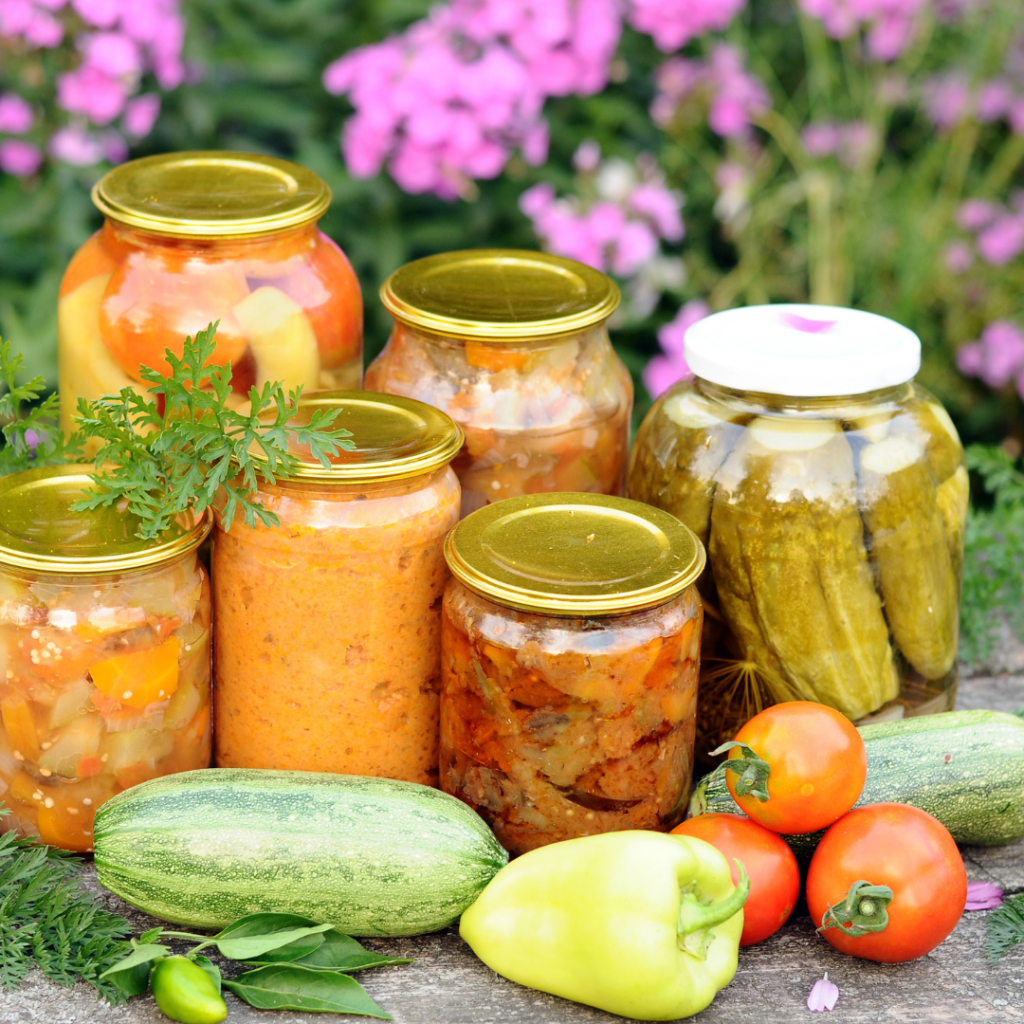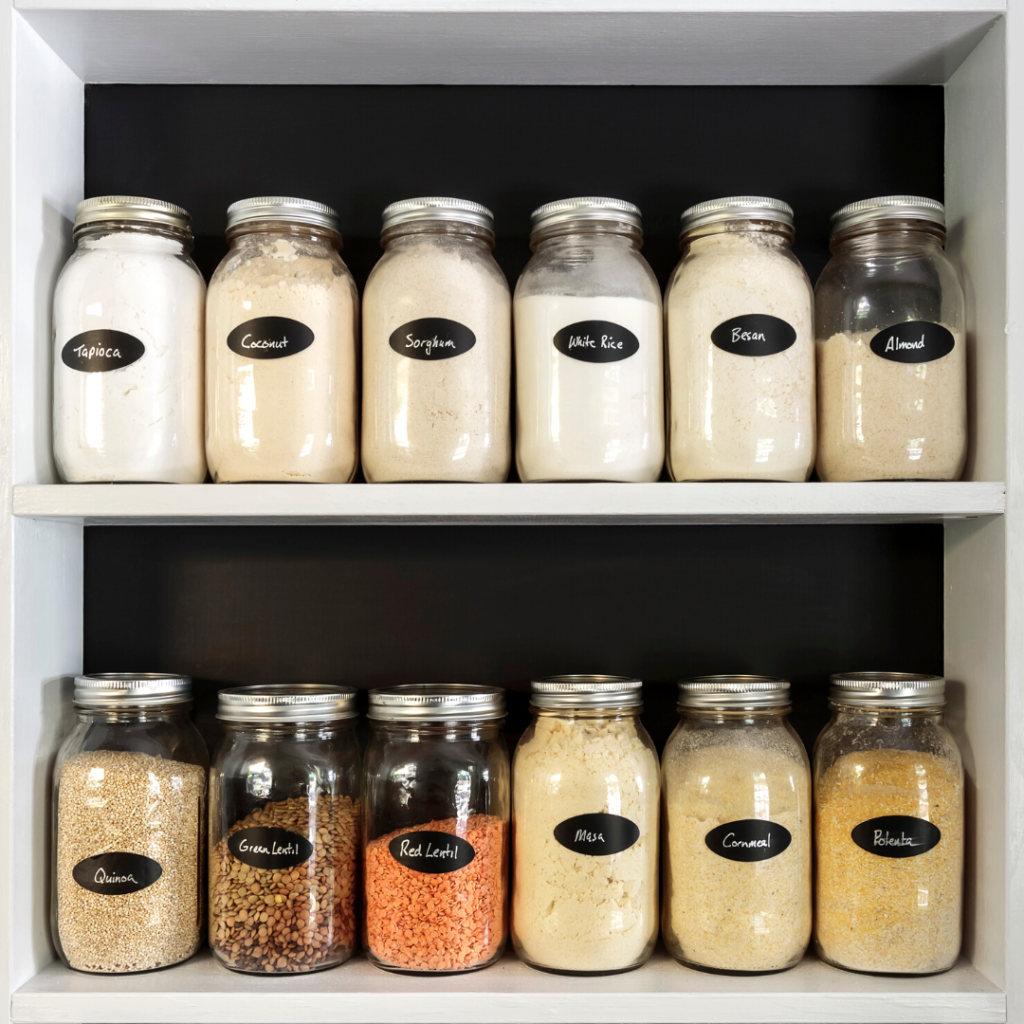
Ways to Produce Our Own Food
Written by Cheri Stirling
Maybe you’ve noticed the prices of groceries have gone up (a lot) lately. Or maybe you’ve heard rumors of bugs being added to food in order to add protein due to potential meat shortages? Or perhaps you have realized that our food supply is very dependent on our supply chain, and have seen the recent farmer protests or trucking protests in the news. These things can seem a little alarming when we think about how comfortable we are in our way of life.
Church leaders have encouraged its members to be productive throughout this dispensation, and to provide for our families as much as we can for many years. As an example, the Church actually owns many farms, ranches and orchards that produce food that are processed in the Church canneries, that are available for families who are victims of natural disasters, war or political strife, or other difficulties. In recent years, the interest in producing our own foods has grown in general among many people, even not of our faith. But today we are going to dive a little deeper into ways that we can produce our own food in our own backyards, and how to preserve our own food. These skills have become a bit of a lost art amongst Americans, so if you are new to this, you are in great company!

Gardening
One popular way that many people are producing their own food is gardening. Many of us have a garden in our backyard to grow summer vegetables. This is a great way to produce things your family loves to eat.
Utilizing Your Space
Depending on our available space, we can have different types of gardens to promote our self-reliance. Last year we moved into a house with a yard from our small townhome, so we will be planting our first traditional garden! While we lived in our townhome, and didn’t have a yard space, we purchased a garden box that could sit on the side of the home. Many people with limits space use window boxes, or their balconies store their planters, where they can grow things like tomatoes, potatoes, or herbs.
Another way to conserve space is using vertical gardening techniques, such as wall gardens or trellises. These work especially well for small root or vine plants.
If you have the space, there are several ways to increase self-reliance in your yard. We have a small lot, so we try to make sure that each plant we grow not only helps beautifies the property, but is functional. In our front “flower bed” we have planted huckleberry plants that should start producing this year. In addition to the vegetable garden this year, we will also be adding a medicinal herb garden, and a few fruit trees, so that eventually they can provide shade, as well as food!
Getting Started
If you are new to gardening, we love the Garden Planner App from the Old Farmer’s Almanac, which allows you to plan your garden based on your space, and then helps you decide plants based on your agricultural area, and companion plants that will grow well together to prevent pests, and promote needed nutrients. It also can help you determine plant cycling, (where you replace plants after harvests) in order to make the most out of your growing season. (This is especially important where we live, because our growing season is so short.)
Livestock
Something that has become more popular again in the last couple years is owning livestock, particularly chickens. We have a few neighbors raising chickens and selling the eggs for a little extra side money. At our house, we are raising meat rabbits.
Being able to have animals for milk, eggs, or meat provides a safety-net for times where we see increases in grocery bills, or food shortages like we saw in the recent pandemic. Be sure to check with your HOA or other local laws about which animals and how many are allowed where you live.
Freeze-Drying
Freeze-drying is another popular way to preserve food. It does require a freeze-dryer, which can be expensive, which can make it difficult for many people to utilize this method. Food is placed in the trays and dried for about 24 hours. Freeze-dried food when stored in an air-tight container can last about 20 years, and maintains its nutritional value longer than most other preservation methods. Freeze dried foods can make for easy meal prep, lesson needed storage space, and is very versatile. You can store anything from fruits and veggies, to butter or eggs, to full meals such as spaghetti, or soup mixes.


Love What You're Reading?
Be sure to check out our weekly podcast series with Meghan!

Shatter Your Triangles
Sometimes we think we have an understanding of the Gospel, but when we take another look at what the scriptures, our paradigms can completely shift! Our Shattering Triangles team aims to help you deepen your testimony and doctrinal understanding to some of the more prominent questions found among members.

Up Your Preparedness Game
Our Honey + Lilies Blog is dedicated to helping you prepare for the days ahead. Want to get started? Click here.
Canning
I grew up helping my grandmother canning things like pears, applesauce, and peaches in the fall. It was a busy time of year, but I remember loving it, because it was when “Grandpa cooked” meaning he was bringing home hamburgers or pizza after work.
This past year I have been working to learn how to can everything we grow, or even make the most of our regular purchases. We canned things like tomato sauce, apple pie filling and applesauce, jams, peaches, and our own bone broth! (And I will never go back to store bought, the homemade stuff is soooo much better.) Each time we go to Costco, we buy three of the rotisserie chickens which I take home to shred, and then we use the bones and vegetables and herbs to make bone broth in the crockpot.
There are two main canning methods: water bath canning, or pressure canning. Water bath canning is for high acid or high sugar foods, such as pickles, fruits, and jams. Water bath canners usually come with a rack. You can also purchase canning accessories such as bottle tongs in a kit. Pressure canning is for things like meats, vegetables, or stews. These are different from the water bath canner. Canning supplies which are generally reusable (minus the sealing lids) which makes it a more sustainable and cost effective way to preserve food. Many foods that are canned at home are also healthier than those cans from the stores. Canned foods can last for years, but should be eaten oldest to newest, as the nutritional value deteriorates over time.
Freezing
Freezing food is one of the simplest ways to preserve food. Most of us buy things at the store to put directly in the freezer, whether its a package of vegetables to have on hand, or meat for a later day. We love to buy hamburger in bulk at Costco or from a local meat supplier, and come home and repackage it to usable servings, and then freeze it.
Some garden vegetables and fruits can simply be washed, chopped or sliced, (such as berries or peaches for smoothies or baking) and placed in freezer-safe containers or bags and placed in the freezer. Others will need to be blanched (briefly boiled) to prepare for the freezer, but then can be frozen.

Smoking
Smoking is another way to preserve food, particularly meats. You can smoke food on a grill, though a smoker does simplify the process. If stored in a proper airtight packaging, smoked meats last about 6 months. We were able to find a smoker on our local Facebook marketplace, and my husband is very excited to test it out this summer!
Fermentation
Fermenting food is when we coat food in a brine. This can be easier on the gut for people who have gut issues like leaky gut, or IBS. This method can be trickier than the others, because if the brine is not the right consistency of water to salt, it can mold, so it takes more monitoring. Sauerkraut and kimchi are popular foods to start with when learning how to ferment food.
Dehydrating
Another thing we have started doing this year is dehydrating food. We found a dehydrator at our local Deseret Industries for a few dollars, so we decided to try it. We were able to make our own onion powder, bell peppers for tacos, chives, and dried veggies to add to pastas or soups. (The tomatoes make a pretty good snack as well!) During harvest season I would chop up all the vegetables that we harvested, and stick them in baggies, and then dry them in batches. We then vacuum sealed them for longer lasting storage.
Growing, raising, and preserving our own foods can lessen our reliance on grocery stores, and our supply chains. As we increase our self-reliance, the Lord can bless us with resources to improve our skills. Being able to produce food for your family brings a peace, especially when the world seems to be jumping from one disaster to the next, that you and your family will be able to help those around you in difficult times.
Resources:
- https://mashable.com/article/how-to-ferment-food
- https://www.grillmastersclub.com/blogs/blog/ultimate-beginners-guide-smoke-meat-home-like-pro
- https://americanmadegrills.com/blogs/grilling-tips/how-smoked-meat-can-be-kept-for-a-long-time#:~:text=How%20Long%20Can%20Smoked%20Meat,best%20or%20used%20by%22%20date.

Love the suggestion of the garden planner app. Getting started from scratch is very intimidating when you’ve history had a black thumb! Offering an online course on canning and preserving would be great too.